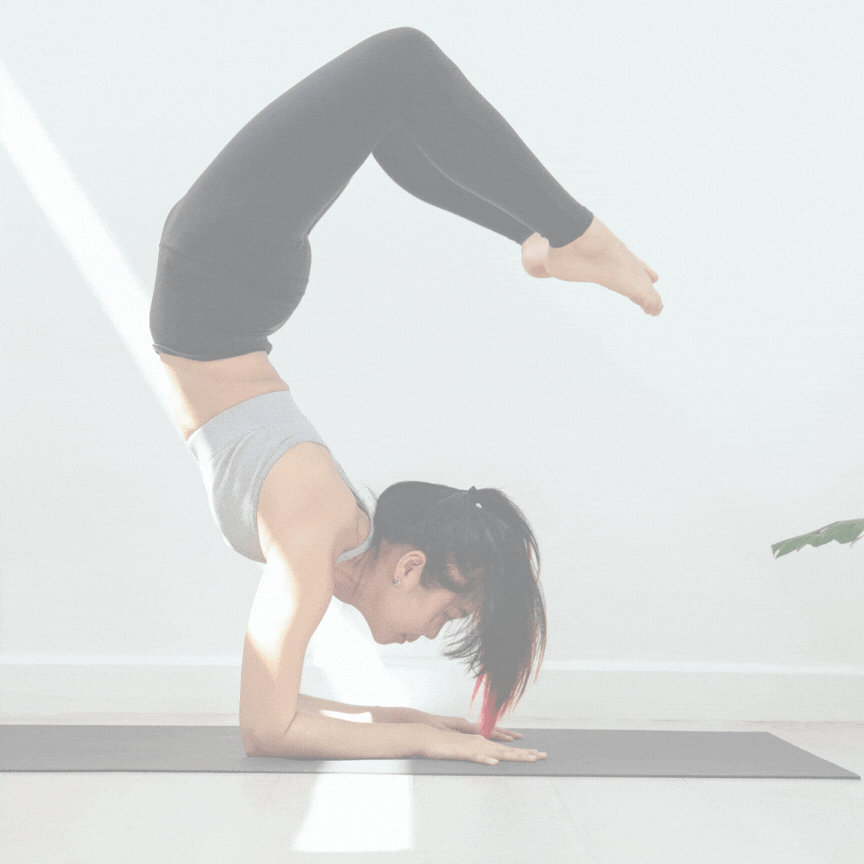
Flexibility and Stability
Flexibility and stability are two essential components of physical fitness that are often overlooked. While strength, endurance, and cardiovascular health may take center stage in many fitness routines, flexibility and stability are crucial in maintaining overall health and preventing injury.
When we talk about flexibility, we’re referring to the ability of our joints to move through a full range of motion without pain or discomfort. In other words, being flexible means being free to move our bodies in any direction quickly.
Stability, however, refers to maintaining balance and control when performing movements or activities. Good stability means maintaining proper alignment in our joints while moving or standing.
Definition of Flexibility and Stability
It’s essential to clearly understand what we mean by flexibility and stability before diving into their benefits for health. As mentioned earlier, flexibility is all about joint mobility – the range of motion at each joint. For example, if you can easily touch your toes or raise your arms over your head without discomfort, you have good flexibility.
Stability is closely connected with balance – maintaining proper alignment during movement or while standing still. For example, you have good strength if you can stand on one foot without wobbling or losing control for an extended time.
Importance of Flexibility and Stability for Health
Both flexibility and stability play significant roles in maintaining optimal physical health. Poor flexibility can lead to joint stiffness and limited range of motion, increasing the risk of injury while performing everyday tasks such as bending over or reaching high. On the other hand, poor stability can lead to poor posture, which can put stress on the joints and lead to chronic pain or injury.
In addition, flexibility and stability are essential for preventing falls and maintaining mobility in later life. Falls are a significant cause of injury in older adults, and good strength can help reduce the risk of falling by improving balance and coordination.
Overview of the Research
Research has shown that targeted exercise interventions can improve flexibility and stability. Specifically, stretching exercises have been shown to improve flexibility, while strength training exercises improves stability.
Additionally, proper nutrition is vital for maintaining joint health and optimizing these physical fitness components. In the following sections, we will delve deeper into the benefits of flexibility and stability for health and provide specific exercises to incorporate into your fitness routine to improve these components.
The Benefits of Flexibility
Improved Range of Motion: Unlocking Your Body’s Full Potential
Flexibility is essential to maintaining a full range of motion in your joints, allowing you to move freely. Better joint mobility makes it easier to perform everyday tasks such as reaching for objects, bending down to tie your shoes, and even getting in and out of bed. A dedicated stretching program can help improve your flexibility and range of motion, which can significantly impact your daily life.
In addition, an increased range of motion can also enhance athletic performance by enabling you to perform more complex movements with greater ease. For example, a martial artist with greater flexibility in their hips can deliver higher kicks with more power.
Reduced Risk of Injury: Preventing Damage Before It Happens
Incorporating stretching exercises into your fitness routine significantly reduces the risk of injury according to research. When muscles and tendons are flexible, they are less likely to strain or tear during physical activity.
For example, tight hamstrings are a common cause of lower back pain. Regular stretching can help alleviate this issue by reducing the tension on these muscles and preventing them from pulling excessively on the lower back.
Enhanced Athletic Performance: Reaching Your Peak Potential
Flexibility is essential for athletes looking to maximize their performance. Increased joint mobility allows athletes to perform movements more quickly and efficiently, helping them achieve peak physical performance (see ACE research).
For runners, improved flexibility can lead to longer strides and reduced muscle fatigue during long-distance runs. Similarly, gymnasts rely heavily on flexibility for both their balance and gracefulness.
Better Posture: Standing Taller Than Ever Before
Poor posture is often a result of tight muscles that pull the body out of alignment. This can cause pain in various body parts, including the neck, shoulders, and lower back. Stretching can help to alleviate this pain by loosening tight muscles and improving posture.
A good posture is also associated with confidence and self-assurance. Improving your posture through flexibility exercises can positively impact your overall mental well-being.
Better Balance: Keeping You Steady on Your Feet
Flexibility training can improve balance by increasing the range of motion in your ankle joints. Stability exercises such as yoga or tai chi also incorporate flexibility training to help you maintain balance while performing different movements. Maintaining good credit is especially important as we age, as it can reduce the risk of falls and fractures.
Everyone can benefit from improved balance – not just seniors. Good credit makes it easier to perform everyday activities, such as standing on one foot while putting on shoes or walking across an uneven surface.
There are many benefits to be gained from incorporating flexibility training into your fitness routine. From enhanced athletic performance to improved joint health and better posture – increasing your range of motion through stretching is essential for maintaining a healthy body at any age.
The Benefits of Stability
Improved Joint Health
When it comes to joint health, stability is crucial. The more stable your joints are, the less likely they will suffer from wear and tear or sustain an injury. A lack of stability can lead to various issues, such as arthritis, tendinitis, and bursitis.
Stability training helps improve joint health by strengthening the muscles around your joints. When these muscles are strong and stable, they provide increased support for your joints during physical activity.
One study on older adults found that adding stability training to their exercise routine improved their balance and reduced their risk of falls by 30%.
Ankle sprain is the most common lower limb injury in athletes and accounts for 16%-40% of all sports-related injuries. Another study showed that athletes who engage in regular stability training are less likely to experience ankle sprains.
Increased Strength and Endurance
Stability training involves performing exercises challenging your body’s ability to maintain proper form under stress or in motion. This type of training improves your overall strength and enhances your endurance levels.
Stability exercises often require you to hold a position for an extended time or perform multiple repetitions with proper form. This places greater demands on your cardiovascular system and the muscles you’re targeting.
Research has shown that adding stability exercises into your fitness routine can significantly improve muscular endurance. One study found that participants who performed a six-week stability program experienced an average increase in endurance of 33%.
Reduced Risk of Falls and Injuries
Falls are one of the leading causes of injury among older adults, but people of all ages can benefit from improving their stability levels. As mentioned earlier, improved balance and joint health can help reduce the risk of falls.
In addition, stable joints also decrease the likelihood of sustaining other types of injuries related to physical activity, such as strains or sprains. By strengthening the muscles around your joints, you improve the stability of your entire body, which can help you avoid injuries in the long run.
A study on female soccer players found that those who engaged in stability training had fewer injuries related to their lower extremities. This is likely due to the fact that stability exercises not only strengthen the muscles but also improve balance and coordination.
Putting It All Together
As you can see, stability training offers a wide range of benefits for your overall health and fitness. Improved joint health, increased strength and endurance, and reduced risk of falls and injuries are just a few advantages you’ll experience by incorporating this type of training into your fitness routine. To get started with stability training, consider working with a personal trainer or physical therapist who can help design a program tailored to your specific needs.
This may involve using equipment such as stability balls or resistance bands or performing bodyweight exercises that challenge your balance and coordination. Whatever approach you take, prioritize stability training as part of your overall fitness routine for optimal health and well-being.
How to Improve Flexibility and Stability
Flexibility and stability are essential components of physical fitness; improving them can enhance your overall health and well-being. Here are some practical ways to improve your flexibility and stability:
Stretching Exercises for Flexibility
Stretching exercises are vital for improving flexibility. They help to increase the range of motion of your joints, reduce muscle tension, and promote relaxation. There are different types of stretching exercises that you can perform:
- Static Stretching
This type of stretching involves holding a position where the muscle is stretched for some time, typically between 15-30 seconds. Static stretching is beneficial for increasing the range of motion, reducing muscle soreness after exercise, and improving flexibility. A simple example of static stretching is the hamstring stretch:
- Sit on the floor with your legs extended in front of you.
- Reach forward towards your toes.
- Hold for 15-30 seconds.
2. Dynamic stretching
Dynamic stretching involves moving through a range of motion repeatedly. This type of stretching helps to improve flexibility by increasing blood flow to muscles and preparing them for physical activity.
An example of dynamic stretching is walking lunges: step forward with one foot while bending both knees until they form two 90-degree angles (one at each knee). Then step forward with the other foot while bending both knees until they form two 90-degree angles again.
3. PNF Stretching
PNF (Proprioceptive Neuromuscular Facilitation) stretching involves contracting a muscle to increase its flexibility before stretching it. This type of stretching requires a partner or therapist but can effectively improve flexibility quickly. An example of PNF stretching is the hamstring stretch, where you contract your hamstring by pushing your heel into the ground for a few seconds before relaxing it and then stretching it further.
Strength Training Exercises for Stability
Strength training exercises are necessary for improving stability. They help to build muscle strength and endurance and improve joint stability. Here are some practical strength training exercises that you can perform:
1. Bodyweight Exercises
Bodyweight exercises use your body weight as resistance to strengthen your muscles. These exercises can be done anywhere and are great for beginners because they do not require any equipment. An example of a bodyweight exercise is the plank: start in a push-up position with elbows on the ground instead of hands and hold this position as long as possible, engaging your core and keeping your back straight.
2. Resistance Band Exercises
Resistance band exercises use an elastic band to provide resistance against muscle movements, thereby increasing strength, tone, and stability. These bands come in different strengths allowing you to increase resistance gradually. An example of a resistance band exercise is bicep curls: stand in the middle of a resistance band while holding each end with palms up, bend elbows while squeezing biceps for 2-3 seconds before lowering down again.
3. Weightlifting Exercises
Weightlifting uses dumbbells or barbells to provide resistance against muscle movements, which helps increase overall strength and power. These exercises can be customized according to individual needs by adjusting weight or repetitions. An example of a weightlifting exercise is squats: stand with feet hip-width apart while holding weights at shoulder height, then lower body bending knees until thighs are parallel to the floor before pushing back up to standing.
Prioritizing Flexibility and Stability for Better Health
Improving flexibility and stability is essential for achieving maximum physical health, preventing injuries, and enhancing performance. Incorporating stretching exercises with strength training exercises into your exercise routine can help you improve your overall fitness level.
Remember to progress gradually, listen to your body, and seek advice from a fitness professional if needed. Consistent practice of these exercises can improve your flexibility and stability, which will benefit you in the gym and in everyday life by reducing your risk of injuries and improving mobility.
The Role Of Nutrition In Improving Flexibility And Stability.
Nutrition is an essential aspect of our overall health and well-being. The food we eat provides us with the necessary nutrients to maintain a healthy body, including flexibility and stability.
Proper nutrition can help support healthy bones, joints, and muscles, contributing to better flexibility and stability.
A) Nutrients That Promote Flexibility
1) Vitamin D: A crucial nutrient for bone health, vitamin D helps improve muscle function and reduce inflammation that can affect flexibility. Getting enough vitamin D through exposure to sunlight or fortified foods like milk can promote better flexibility.
2) Omega-3 Fatty Acids: Omega-3 fatty acids are essential nutrients for overall health, playing a critical role in reducing inflammation. Inflammation is a significant factor in reduced flexibility and joint pain.
3) Protein: Adequate protein intake is vital for maintaining muscle mass, and strength is crucial in improving flexibility. Lean proteins such as chicken breast, fish, beans, and eggs are good sources of high-quality protein that help maintain muscle mass.
B) Nutrients That Promote Stability
1) Calcium: A vital mineral for bone strength, calcium plays an essential role in supporting strong bones, contributing to improved stability.
Good sources of calcium include dairy products like milk or cheese, along with green leafy vegetables like kale or broccoli.
2) Magnesium: Magnesium supports bone density by helping regulate calcium levels within the body and improving muscle function, contributing to better stability.
Foods rich in magnesium include nuts, seeds (pumpkin seeds or sunflower seeds), whole grains such as whole wheat bread or oats, and green leafy vegetables like spinach or kale.
3) Potassium: Potassium plays a vital role in regulating fluid balance within the body while also helping to prevent cramps that could affect stability during physical activity. Good potassium sources include bananas, sweet potatoes, avocadoes, and some fish like salmon.
C) Tips For Incorporating Nutrients Into Your Diet
1) Eat A Balanced Diet: One of the easiest ways to ensure you’re getting the necessary nutrients to support flexibility and stability is by including various foods in your diet.
A balanced diet with fruits, vegetables, whole grains, lean proteins, and healthy fats can provide all the nutrients needed for better flexibility and stability.
2) Consider Supplements: If you have specific dietary restrictions or cannot obtain enough nutrients through food alone, supplements can provide an easy way to increase your nutrient intake.
Speak with your healthcare provider before starting any supplement regimen.
3) Maintain Hydration: Adequate hydration is essential for flexibility and stability.
Water is the best source of hydration and should be consumed throughout the day to keep the body functioning correctly.
Why You Should Prioritize Your Flexibility And Stability For Better Health
Flexibility and stability are crucial components of overall health that play significant roles in daily activities such as walking or physical activity participation.
Improving flexibility can help reduce injury risk while also improving range of motion, whereas improving stability contributes to better joint health along with increased strength and endurance. Proper nutrition is critical in supporting flexibility and stability by providing essential nutrients necessary for bone strength and muscle function, directly or indirectly contributing to better flexibility/stability.
A balanced diet rich in fruits/vegetables, lean proteins, and proper hydration should be prioritized for optimal bodily function, while supplements can also provide additional support if needed. By prioritizing flexibility and stability through the exercise/nutrition strategies discussed above, you will enjoy an excellent quality of life as you age gracefully, maintaining full mobility into later life years!
Why You Should Prioritize Your Flexibility And Stability For Better Health
The Importance of Making Flexibility and Stability a Priority
Flexibility and stability are crucial components of overall health and well-being. They allow us to move freely, prevent injuries, maintain proper posture and balance, perform daily activities efficiently, and engage in physical activity. By prioritizing flexibility and stability in our lives, we can improve our quality of life on multiple levels.
The Benefits of Prioritizing Flexibility and Stability
Prioritizing flexibility and stability can lead to numerous benefits for our physical and mental health. By improving our range of motion, reducing pain, preventing injuries, enhancing athletic performance, improving joint health, increasing strength and endurance, and reducing the risk of falls, we can experience greater confidence in ourselves as we tackle everyday life. Better flexibility also improves blood flow which is suitable for the brain’s cognitive functions.
How to Incorporate Flexibility And Stability Into Your Daily Routine
Incorporating exercises that improve flexibility, such as dynamic or PNF stretching, into your daily routine can significantly improve overall mobility. Similarly, regular resistance bands or weightlifting exercises can help stabilize joints, leading to increased strength, which will benefit overall health. Proper nutrition also plays an important role in achieving flexibility and stability goals.
Mental Clarity Through Movement
Research shows exercise helps alleviate anxiety by releasing endorphins that reduce stress levels while increasing feelings of happiness. Moving freely without stiffness or pain brings positivity into one’s life, leading to an improved mindset.
Flexibility and Stability is essential to prevent injuries
Prioritizing flexibility and stability is essential to achieving optimal physical fitness while staying injury-free. Anyone can improve their flexibility and stability with the right mindset and tools. Incorporating these exercises into your routine may take some time to get used to, but the benefits are well worth it.
Remember that our bodies are designed to move and thrive in ways that keep us healthy. By prioritizing flexibility and stability in our lives, we can achieve higher levels of physical health, mental clarity, and overall happiness.
Flexibility and stability are important for your health because they help you move better and prevent injuries. The following links to articles below will get even deeper than this about why flexibility and stability are each important and how to improve them.
Flexibility and Muscle Range of Motion Tests
Flexibility refers to the ability of your muscles to stretch and move through their full range of motion. A lack of flexibility can lead to muscle tightness, which can increase your risk of injury. To assess your flexibility, you can do muscle range of motion tests. These tests involve moving your joints through different positions to see how far you can move them.
Balance and Core: Why and How to Assess Them
Balance and core stability are important for maintaining good posture and preventing falls. To assess your balance, you can do simple tests such as standing on one leg or walking heel-to-toe. Core stability can be assessed by doing exercises such as planks or side planks.
Muscle Imbalances and Their Impact on Stability and Mobility
Muscle imbalances occur when certain muscles are stronger or weaker than others. This can lead to poor posture, decreased mobility, and increased risk of injury. It is important to identify and address muscle imbalances to maintain good health.
How to Address Muscle Imbalances
To address muscle imbalances, you can do exercises that target weaker muscles and stretch tighter muscles. For example, if you have weak glutes, you can do exercises such as squats or lunges to strengthen them. If you have tight hip flexors, you can do stretches such as the hip flexor stretch to loosen them up.
Proximal Stability Leads to Distal Mobility
Proximal stability refers to having a stable core, which includes your hips, pelvis, and lower back. When this part of your body is stable and strong, it provides a solid foundation for movement in your limbs, such as your arms and legs. This stability allows your limbs to move more freely and with greater control, leading to better mobility.
Think of it like building a house. The foundation needs to be strong and stable to support the walls and roof. In the same way, your core needs to be strong and stable to support movement in your limbs.
To achieve proximal stability, you can do exercises that target your core muscles, such as planks, bridges, and bird dogs. By building strength in your core, you’ll be able to move more efficiently and with better control.
Overall, proximal stability is important for maintaining good posture, preventing injuries, and improving athletic performance. Remember, a strong foundation leads to better movement in your limbs!
Flexibility Techniques
There are several flexibility techniques you can use to improve your flexibility, such as static stretching, dynamic stretching, and foam rolling. Static stretching involves holding a stretch for a certain period of time. Dynamic stretching involves moving your body through a range of motion. Foam rolling involves using a foam roller to apply pressure to your muscles.
These are just a few examples that show how flexibility and stability are important for your health because they help you move better and prevent injuries. By assessing your flexibility and stability, identifying muscle imbalances, and doing exercises to address them, you can improve your overall health and well-being.









